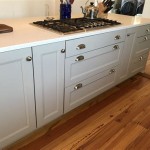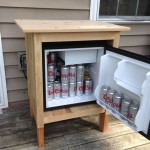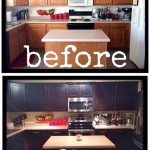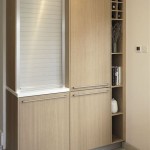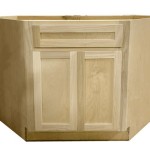Do I Need To Prime My Kitchen Cabinets Before Painting?
Painting kitchen cabinets is a cost-effective way to refresh the look of a kitchen without undergoing a full remodel. However, the longevity and quality of the paint job hinge on proper preparation, and a crucial element of that preparation is priming. The question of whether or not to prime kitchen cabinets before painting is a common one, and the answer is rarely a simple yes or no. Understanding the purpose of primer, the different types of cabinet materials, and the paints being used are all essential to making an informed decision.
Primer serves several critical functions. Primarily, it creates a uniform, stable surface for the paint to adhere to. This is particularly important in kitchens, which are subject to high levels of moisture, grease, and wear and tear. Without a proper primer coat, the paint may not bond correctly to the cabinet surface, leading to peeling, chipping, and an uneven finish. Furthermore, primer can seal porous surfaces, preventing them from absorbing the paint unevenly. This results in a more consistent color and sheen across the entire cabinet.
Finally, primer acts as a barrier between the existing cabinet finish and the new paint. This is especially important if the old finish is glossy, stained, or contains tannins that could bleed through and discolor the new paint. By blocking these potential issues, the primer ensures a clean and professional-looking final product.
Understanding the Importance of Priming Based on Cabinet Material
The material of the kitchen cabinets significantly impacts the necessity of priming. Different materials have varying levels of porosity and inherent properties that influence paint adhesion. Consequently, what works for one type of cabinet material might not be suitable for another.
Solid wood cabinets, for instance, often require priming due to the wood's natural porosity. Wood absorbs paint readily, which can lead to uneven color saturation and the need for multiple coats of paint. A primer seals the wood grain, reducing the amount of paint absorbed and ensuring a more uniform finish. Additionally, certain types of wood, such as oak and mahogany, contain tannins that can leach through the paint and cause discoloration. A stain-blocking primer is particularly beneficial in these cases.
Laminate cabinets, on the other hand, present a different challenge. Laminate is a non-porous material with a slick surface that paint struggles to adhere to. Without proper preparation, paint applied directly to laminate is likely to scratch or peel easily. Priming laminate cabinets with a specialized bonding primer is essential to create a surface that the paint can grip. These primers are formulated with adhesive properties that promote strong adhesion to smooth, non-porous surfaces.
Medium-density fiberboard (MDF) cabinets are commonly found in modern kitchens. MDF is a composite material made from wood fibers, resin, and wax. Although MDF has a relatively smooth surface, it is highly absorbent, especially along the edges. Priming MDF cabinets is crucial to seal the surface and prevent the paint from soaking in excessively. This helps to create a smooth, consistent finish and reduces the risk of swelling or warping of the MDF due to moisture absorption.
Painted cabinets, whether previously painted wood, laminate, or MDF, may also require priming depending on the condition of the existing paint. If the old paint is in good condition, with no signs of peeling, chipping, or cracking, and the color is similar to the new paint color, priming may not be necessary. However, if the old paint is glossy, damaged, or a drastically different color than the new paint, priming is recommended to ensure proper adhesion and coverage.
Choosing the Right Type of Primer for Kitchen Cabinets
Selecting the correct type of primer is just as important as deciding whether or not to prime. Different primers are formulated with specific properties to address various surface conditions and paint types. Using the wrong primer can negatively impact the adhesion, appearance, and durability of the final paint job.
Oil-based primers are known for their excellent adhesion, stain-blocking capabilities, and ability to seal porous surfaces. They are particularly effective for priming bare wood cabinets or cabinets with existing stains or varnishes. Oil-based primers create a hard, durable surface that is resistant to moisture and stains. However, they tend to have a strong odor, require mineral spirits for cleanup, and take longer to dry than other types of primers.
Latex primers are water-based and offer several advantages over oil-based primers. They have low odor, are easy to clean up with soap and water, and dry relatively quickly. Latex primers are suitable for priming previously painted surfaces, drywall, and other porous materials. However, they may not be as effective as oil-based primers at blocking stains or sealing bare wood. Some latex primers are specifically formulated as "self-priming" paints, but their effectiveness as a primer alone should be carefully considered based on the specific cabinet material and desired outcome.
Shellac-based primers offer exceptional adhesion, stain-blocking, and sealing properties. They are particularly effective at blocking stubborn stains, such as water stains, smoke damage, and tannin bleed. Shellac primers dry very quickly and can be painted over with either oil-based or latex paints. However, they tend to be more expensive than other types of primers and require denatured alcohol for cleanup.
Bonding primers are designed specifically for use on non-porous surfaces, such as laminate, plastic, and metal. These primers contain special additives that promote adhesion to slick, hard-to-grip surfaces. Bonding primers are essential for preparing laminate cabinets for painting and ensuring a durable, long-lasting finish.
Epoxy primers are generally considered a more durable and high-performance primer used for a wide array of materials. They offer both superior adhesion as well as strong resistance to chemicals and corrosion. These are often more costly than other alternatives.
Factors Influencing the Decision to Prime Kitchen Cabinets
Beyond material considerations, several other factors can influence the decision of whether or not to prime kitchen cabinets before painting. These factors include the condition of the existing finish, the type of paint being used, and the desired level of durability.
If the existing cabinet finish is in poor condition, with peeling, chipping, or cracking paint, priming is highly recommended. A primer will help to create a smooth, uniform surface for the new paint and prevent the imperfections from showing through. Scraping and sanding the cabinets to remove loose paint and create a slightly roughened surface will further enhance the primer's adhesion.
The type of paint being used can also affect the need for priming. Some paints, particularly high-quality acrylic latex paints, may have self-priming properties. However, even with self-priming paints, priming is often recommended for optimal adhesion and durability, especially on challenging surfaces like laminate or bare wood. The manufacturer's recommendations for the specific paint being used should always be consulted.
Finally, the desired level of durability should be considered. Kitchen cabinets are subjected to frequent use and exposure to moisture, grease, and cleaning products. Priming the cabinets will significantly enhance the durability of the paint job and protect the cabinets from damage. If a long-lasting, professional-looking finish is desired, priming is a worthwhile investment.
Ultimately, the decision of whether or not to prime kitchen cabinets before painting is a complex one that depends on a variety of factors. By carefully considering the cabinet material, the type of primer, the condition of the existing finish, and the type of paint being used, an informed decision can be made to ensure a successful and long-lasting paint job.
Proper preparation, including thorough cleaning, sanding, and priming, is critical for achieving a professional-looking finish on kitchen cabinets. While it may add an extra step to the painting process, priming offers numerous benefits that outweigh the additional time and effort. A well-primed surface will not only improve paint adhesion and coverage but also enhance the durability and longevity of the paint job. Therefore, in most cases, the answer to the question of "Do I need to prime my kitchen cabinets before painting?" is a resounding yes.

What You Need To Know Before Painting Cabinets The Palette Muse

How To Paint Kitchen Cabinets A Step By Guide Confessions Of Serial Do It Yourselfer

How To Paint Kitchen Cabinets A Step By Guide Confessions Of Serial Do It Yourselfer

How To Clean Prep Wood Kitchen Cabinets Before Painting Do Dodson Designs

How To Paint Kitchen Cabinets Without Sanding Or Priming

Painting Kitchen Cabinets Without Primer

Refinish Kitchen Cabinets With Kilz Restoration Primer

How To Prime Cabinets For A Smooth Finish The Turquoise Home

Avoid These Mistakes How To Paint Cabinets That Are Already Painted Grace In My Space

A Year In Review Of How I Painted My Laminate Cabinets With Two Methods
Related Posts

